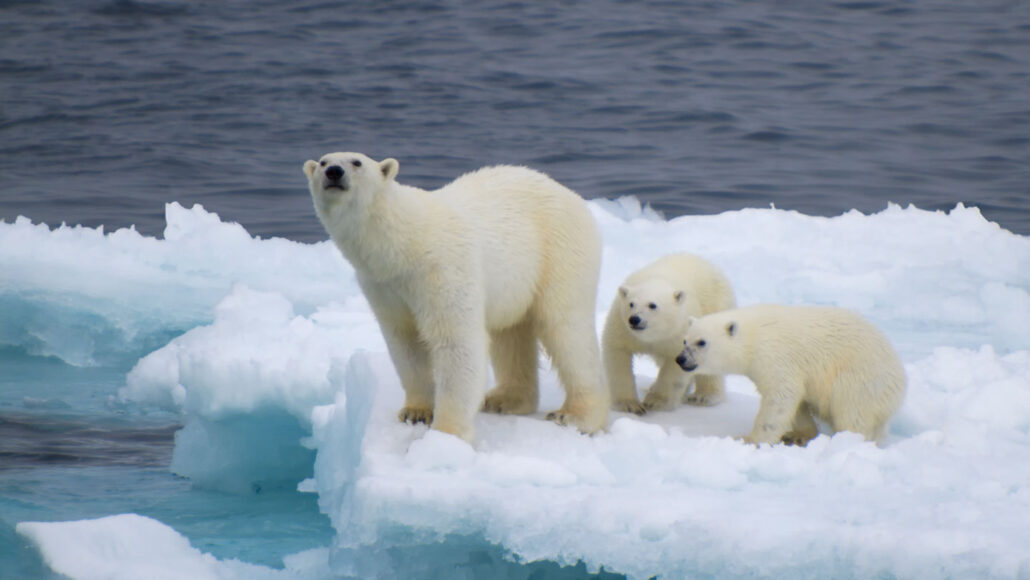adaptation: (in biology) A process by which an organism or species becomes better suited to its environment. When a community of organisms does this over time, scientists refer to the change as evolution.
behavior: The way something, often a person or other organism, acts towards others, or conducts itself.
camouflage: Hiding people or objects from an enemy by making them appear to be part of the natural surroundings. Animals can also use camouflage patterns on their skin, hide or fur to hide from predators.
environment: The sum of all of the things that exist around some organism or the process and the condition those things create. Environment may refer to the weather and ecosystem in which some animal lives, or, perhaps, the temperature and humidity (or even the placement of things in the vicinity of an item of interest).
evolution: (v. to evolve) A process by which species undergo changes over time, usually through genetic variation and natural selection. These changes usually result in a new type of organism better suited for its environment than the earlier type. The newer type is not necessarily more “advanced,” just better adapted to the particular conditions in which it developed. Or the term can refer to changes that occur as some natural progression within the non-living world (such as computer chips evolving to smaller devices which operate at an ever faster speed).
generation: A group of individuals (in any species) born at about the same time or that are regarded as a single group. Your parents belong to one generation of your family, for example, and your grandparents to another. Similarly, you and everyone within a few years of your age across the planet are referred to as belonging to a particular generation of humans. The term also is sometimes extended to year classes of other animals or to types of inanimate objects (such as electronics or automobiles).
genetic: Having to do with chromosomes, DNA and the genes contained within DNA. The field of science dealing with these biological instructions is known as genetics. People who work in this field are geneticists.
natural selection: This is guiding concept underlying evolution, or natural adaptation. It holds that natural mutations within a population of organisms will create some new forms that are better adapted to their environment. That adaptation makes them more likely to survive and reproduce. Over time, these survivors may come to dominate the original population. If their adaptive changes are significant enough, those survivors may also constitute a new species.
organism: Any living thing, from elephants and plants to bacteria and other types of single-celled life.
oxygen: A gas that makes up about 21 percent of Earth's atmosphere. All animals and many microorganisms need oxygen to fuel their growth (and metabolism).
penguin: A flightless black-and-white bird native to the far Southern Hemisphere, especially Antarctica and its nearby islands.
population: (in biology) A group of individuals (belonging to the same species) that lives in a given area.
prey: (n.) Animal species eaten by others. (v.) To attack and eat another species.
selection: In biology, a process in which environmental or genetic influences determine.
trait: A characteristic feature of something. (in genetics) A quality or characteristic that can be inherited.








